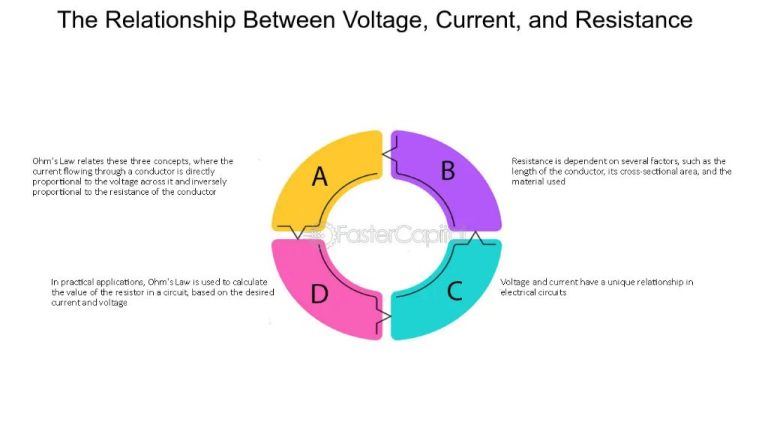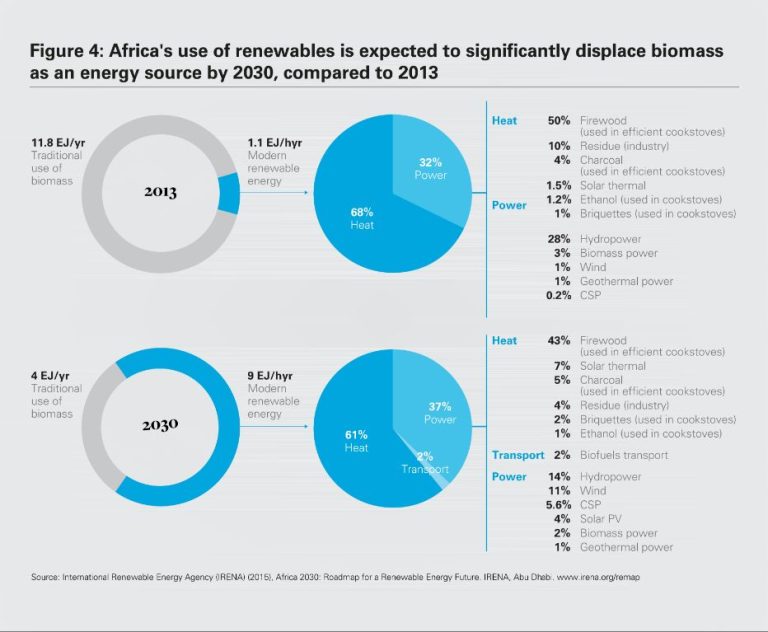What Are Five Sources Of Electrical Power?
Introduction
Electricity powers our modern world and there are several major sources that are used to generate electrical power. The five primary sources for generating electricity are fossil fuels, nuclear power, hydropower, wind power, and solar power. Each has advantages and disadvantages in terms of cost, availability, environmental impact, and long-term sustainability. This article will provide an overview of the five major sources of electrical power generation.
Fossil Fuels
Fossil fuels like coal, natural gas and petroleum are one of the most common sources of generating electricity around the world. They are formed from the decomposition and pressurization of organic materials over millions of years.
Coal is a combustible black or brownish-black sedimentary rock that is mined and burned to produce electricity. Coal-fired power plants heat water to produce steam, which then spins turbines that generate electricity.
Natural gas is a fossil fuel that consists mainly of methane and is used to fire turbines to generate electricity. It can also be used in fuel cells to produce electricity.
Petroleum refers to crude oil and petroleum products like gasoline, diesel and fuel oil. These fuels can be burned to heat water and produce electricity.
The pros of fossil fuels are that they are relatively cheap and abundant sources of concentrated energy. However, burning them produces air pollutants like sulfur dioxide, nitrogen oxides and mercury that contribute to acid rain, smog and health issues. They also produce large amounts of carbon dioxide emissions that accelerate climate change. There are also environmental impacts from mining and drilling operations.
Nuclear
Nuclear power is generated through a process called nuclear fission, where atoms of nuclear fuel such as uranium are split to release massive amounts of energy. Uranium is the most common nuclear fuel and must be mined from the ground. Nuclear fission reactions take place within nuclear reactors typically located inside nuclear power plants. The heat from fission is used to boil water into steam which spins a turbine connected to a generator to produce electricity.
Nuclear power has several advantages: it does not directly emit greenhouse gases, it is not affected by fluctuating fuel costs, and the energy density of nuclear fuel is much higher than fossil fuels. However, nuclear power also has drawbacks including high startup costs, accidents risks, radioactive waste products, and associations with nuclear weapons. Overall, nuclear power remains controversial but provides a major source of reliable baseline power in many countries.
Hydropower
Hydropower harnesses the energy of flowing or falling water to generate electricity. It relies on dams, reservoirs, tidal power, wave power or run-of-river systems to capture energy. Some of the pros of hydropower include its renewable, domestic source of energy and low operating costs once facilities are constructed. However, the large dams and reservoirs required can negatively impact the environment and wildlife habitats.
Dams play a crucial role in hydropower by providing a large water reserve, allowing the flow rate and water elevation to be controlled. Traditional hydropower plants use a dam to store river water in a reservoir. When electricity is needed, gates open to release water from the higher elevation reservoir down into the turbines. Other systems like run-of-river use the natural flow of rivers without the need for dams or reservoirs.
Tidal power utilizes the daily rise and fall of ocean tides to run turbines and generate electricity. Similarly, wave power harnesses the energy from ocean surface waves. Both tidal and wave energy are still emerging technologies but hold potential as renewable energy sources.
While hydropower offers clean and domestic renewable energy, the damming of rivers can negatively impact the environment. Dams and reservoirs may obstruct fish migration, change water temperatures, reduce oxygen levels, and alter natural flow patterns. Careful site selection, fish ladders, and minimum flow requirements can help mitigate some of these impacts.
Wind
Wind energy harnesses the power of wind to generate electricity through the use of wind turbines. Wind turbines convert the kinetic energy in wind into mechanical power which then spins a generator to produce electricity.
Wind turbines are usually grouped together into wind farms that contain dozens or hundreds of individual wind turbines. Wind farms can be built onshore or offshore in bodies of water like oceans and lakes. Some of the largest wind farms are offshore and take advantage of stronger and more consistent winds found over bodies of water.
The pros of wind power include:
- Renewable – Wind is a renewable energy source that will not run out.
- Clean – Wind energy does not pollute the air like fossil fuels.
- Cost-competitive – The cost of wind power has dropped dramatically in recent decades and is now competitive with fossil fuels.
- Job creation – Wind turbine manufacturing, construction and maintenance creates many jobs.
The cons of wind power include:
- Intermittent – Wind speeds vary, leading to inconsistent electrical generation.
- Land use – Large land areas are required for wind farms.
- Noise pollution – Wind turbines make noise that some view as intrusive.
- Threat to wildlife – Wind turbines can negatively impact birds and bats.
Overall wind energy will continue growing as a major source of renewable electricity due to its environmental benefits and rapidly improving economics.
Solar
Solar power is generated by capturing energy from the sun and converting it into electricity. There are two main technologies for generating solar power: photovoltaics (PV) and concentrated solar power (CSP).
Photovoltaic panels, made up of solar cells, convert sunlight directly into electricity through the photovoltaic effect. Arrays of PV panels are used in residential and commercial applications as well as large utility-scale solar farms.
Pros of PV solar:
- Simple and modular technology makes adoption flexible
- Costs have decreased dramatically in past decade
- Generates power silently and with zero emissions
- Can be installed on homes/businesses or scaled to utility size
Cons of PV solar:
- Intermittent generation dependent on sunny weather
- Large surface area required for meaningful energy production
- Toxic materials used in manufacturing process
- Degrades over time and must be replaced
Concentrated solar power systems use mirrors or lenses to focus sunlight into an extremely intense beam. The concentrated heat is transferred to a fluid which creates steam to spin a turbine and generator. CSP allows energy storage by heating molten salt to run generators after sunset.
Pros of CSP solar:
- Ability to store thermal energy allows power generation after sunset
- Higher efficiency than PV panels
- Lower land usage than PV for equivalent power capacity
Cons of CSP solar:
- More complex technology requires specialized siting and infrastructure
- Thermal storage less efficient than battery storage
- Water use for cooling and steam generation
Geothermal
Geothermal power comes from harnessing the natural heat within the earth. There are three types of geothermal power plants that utilize the earth’s heat in different ways:
– Geothermal plants use steam or hot water from geothermal reservoirs found deep underground. The steam rotates a turbine that activates a generator, which produces electricity.
– Steam wells are drilled into a geothermal reservoir to provide steam directly to a power plant. The steam goes through a pipe to a turbine/generator unit.
– Binary cycle plants transfer the heat from geothermal hot water to another liquid. The heat causes the second liquid to turn to steam, which then drives a turbine. This process allows electricity production at lower temperatures.
Some of the benefits of geothermal energy include:
– It is a renewable energy source that is available constantly.
– Geothermal plants have low emissions compared to fossil fuel plants.
– Land use is minimal since wells need only small areas.
– Geothermal energy is cost-effective over time.
Some drawbacks of geothermal power include:
– High upfront costs for drilling and exploration of reservoirs.
– Limited to areas with adequate underground heat and water access.
– Geothermal sites can run out over time if fluid withdrawal exceeds replenishment.
– Facilities need to manage discharged fluids that may be at high temperatures and contain contaminants.
Biomass
Biomass refers to organic material that comes from plants and animals that can be used as a source of energy. Some examples of biomass sources include:
- Plant waste – This includes residue from crops, trees, and other plants.
- Animal waste – Manure and other animal waste products can be converted into biogas.
- Landfill gas – The organic waste in landfills produces methane gas that can be captured and used for energy.
Using biomass as an energy source has several pros and cons:
Pros:
- Renewable – Biomass is considered a renewable energy source as long as we grow plants and raise animals.
- Reduces waste – Using animal and plant waste for energy reduces the amount going into landfills.
- Versatile – Biomass can be used to generate electricity, transportation fuels like ethanol, and heat for homes and businesses.
Cons:
- Pollution – Burning biomass releases carbon dioxide, although it is generally considered carbon neutral. Other pollutants may also be emitted.
- Land use – Large-scale biomass production requires significant land to grow the needed plants and raise animals.
- Inefficient – Biomass is not as efficient a fuel source as fossil fuels, requiring more to produce the same amount of energy.
Overall, biomass can serve as a renewable and flexible source of energy, but also has some downsides regarding efficiency and pollution.
Hydrogen
Hydrogen is a promising source of electricity that can be produced through various methods. One method is through fuel cells, which convert hydrogen and oxygen into water, generating electricity in the process. Fuel cells are highly efficient and do not involve any combustion or emissions. Hydrogen can be supplied directly to fuel cells or be produced from fuels like natural gas or biogas through a process called reforming.
Another method is electrolysis, which uses electricity to split water into hydrogen and oxygen. The hydrogen can then be stored and used later in fuel cells to generate electricity. While electrolysis requires electricity input, it enables hydrogen to act as an energy storage medium.
Hydrogen has several advantages as an energy source. It does not emit any carbon dioxide or pollutants when used in fuel cells. It can be produced from a variety of sources, including renewable sources like wind and solar. Hydrogen provides a way to store energy from intermittent renewable sources. The raw materials needed to produce hydrogen, like water and biogas, are abundant.
However, there are also some challenges with hydrogen. Producing it efficiently at a large scale and high purity requires overcoming technical hurdles. Developing infrastructure for hydrogen production, storage, transmission and distribution will require major investments. There are also safety concerns associated with hydrogen which has led to strict regulations. While fuel cell costs have come down, further cost reductions are needed for mass adoption.
Overall, hydrogen has the potential to enable clean, efficient electricity generation if key technical and economic challenges can be overcome. With more research and investment, hydrogen may become a major pillar of a sustainable energy future.
Conclusion
There are many options for generating electrical power, each with their own advantages and disadvantages. The five primary sources are fossil fuels, nuclear, hydropower, wind and solar.
Fossil fuels like coal and natural gas are plentiful but not renewable. They provide a reliable baseload power but also produce greenhouse gas emissions. Nuclear offers emission-free baseload power but faces concerns over radiation risks and waste disposal.
Hydropower utilizes flowing water which is renewable but requires suitable rivers or reservoirs. Wind and solar sources are also renewable and emission-free but provide intermittent power dependent on weather conditions.
Overall, a mix of these sources is generally used to meet electricity demand. As technology improves and grid management evolves, there is increasing potential for growth in renewable sources like wind and solar paired with energy storage solutions. The optimal energy mix depends on the specific circumstances and needs of each region.




